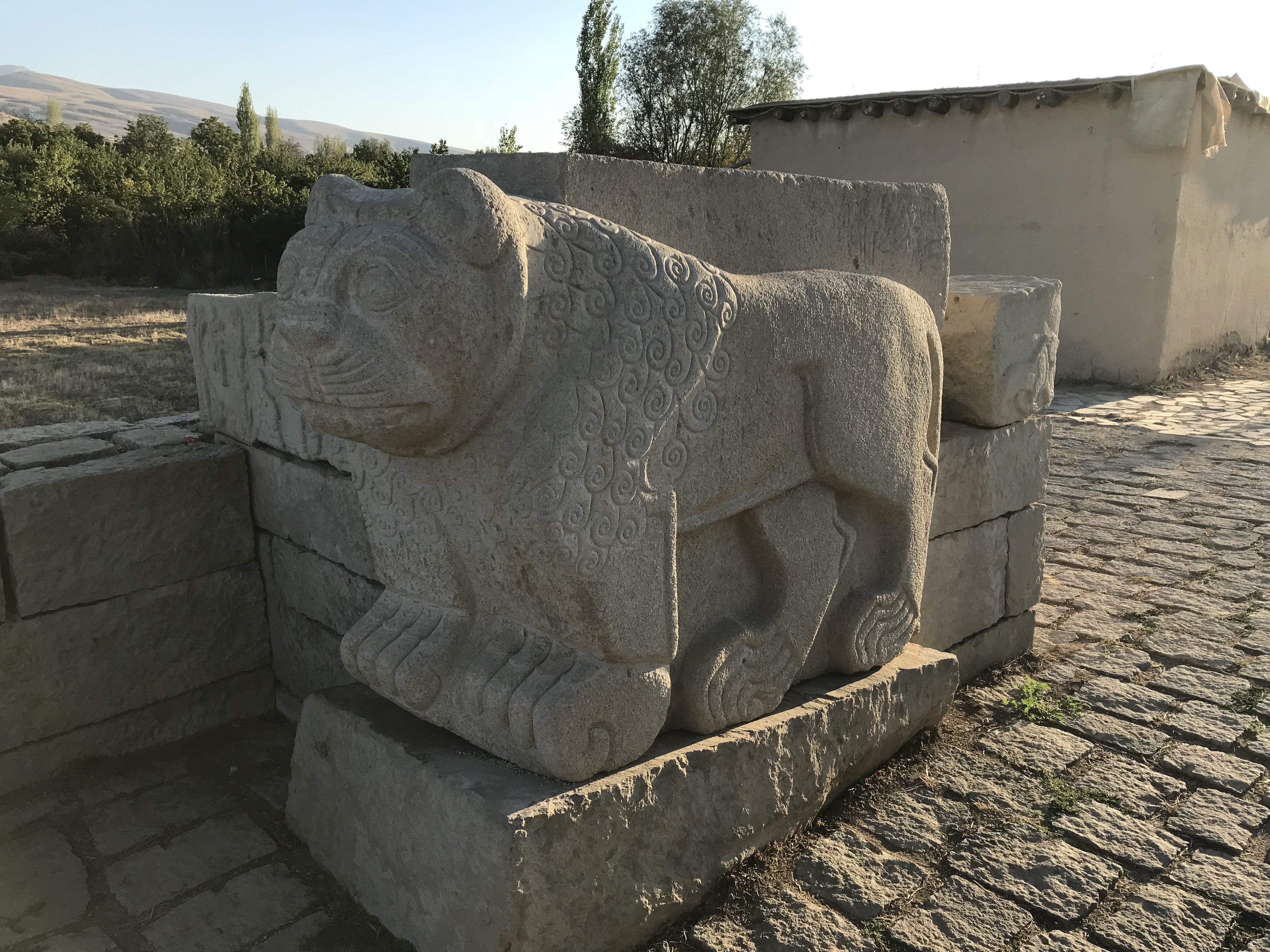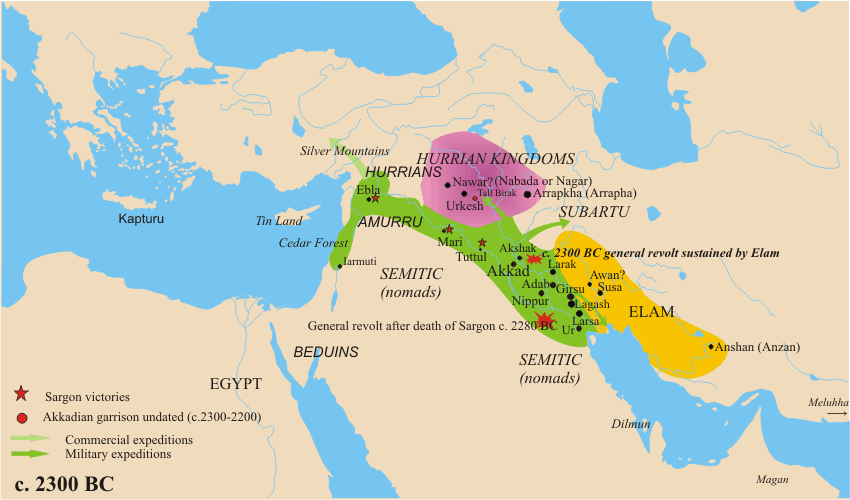|
Milid
Melid, also known as Arslantepe, was an ancient city on the Tohma River, a tributary of the upper Euphrates rising in the Taurus Mountains. It has been identified with the modern archaeological site of Arslantepe near Malatya, Turkey. It was named a UNESCO World Heritage Site under the name Arslantepe Mound on 26 July 2021. History Late Chalcolithic The earliest habitation at the site dates back to the Chalcolithic period. Arslantepe (VII) became important in this region in the Late Chalcolithic. A monumental area with a huge mudbrick building stood on top of a mound. This large building had wall decorations; its function is uncertain. Degirmentepe Değirmentepe, a site located 24 km northeast of Melid, is notable as the location of the earliest secure evidence of copper smelting. The site was built on a small natural outcrop in the flood plain about 40m from the Euphrates River. Early Bronze By the late Uruk period development had grown to include a large temple/p ... [...More Info...] [...Related Items...] OR: [Wikipedia] [Google] [Baidu] |
Turkey
Turkey ( tr, Türkiye ), officially the Republic of Türkiye ( tr, Türkiye Cumhuriyeti, links=no ), is a list of transcontinental countries, transcontinental country located mainly on the Anatolia, Anatolian Peninsula in Western Asia, with a East Thrace, small portion on the Balkans, Balkan Peninsula in Southeast Europe. It shares borders with the Black Sea to the north; Georgia (country), Georgia to the northeast; Armenia, Azerbaijan, and Iran to the east; Iraq to the southeast; Syria and the Mediterranean Sea to the south; the Aegean Sea to the west; and Greece and Bulgaria to the northwest. Cyprus is located off the south coast. Turkish people, Turks form the vast majority of the nation's population and Kurds are the largest minority. Ankara is Turkey's capital, while Istanbul is its list of largest cities and towns in Turkey, largest city and financial centre. One of the world's earliest permanently Settler, settled regions, present-day Turkey was home to important Neol ... [...More Info...] [...Related Items...] OR: [Wikipedia] [Google] [Baidu] |
Arslantepe Ruins, Malatya 15
Melid, also known as Arslantepe, was an ancient city on the Tohma River, a tributary of the upper Euphrates rising in the Taurus Mountains. It has been identified with the modern archaeological site of Arslantepe near Malatya, Turkey. It was named a UNESCO World Heritage Site under the name Arslantepe Mound on 26 July 2021. History Late Chalcolithic The earliest habitation at the site dates back to the Chalcolithic period. Arslantepe (VII) became important in this region in the Late Chalcolithic. A monumental area with a huge mudbrick building stood on top of a mound. This large building had wall decorations; its function is uncertain. Degirmentepe Değirmentepe, a site located 24 km northeast of Melid, is notable as the location of the earliest secure evidence of copper smelting. The site was built on a small natural outcrop in the flood plain about 40m from the Euphrates River. Early Bronze By the late Uruk period development had grown to include a large temple/p ... [...More Info...] [...Related Items...] OR: [Wikipedia] [Google] [Baidu] |
Hurrians
The Hurrians (; cuneiform: ; transliteration: ''Ḫu-ur-ri''; also called Hari, Khurrites, Hourri, Churri, Hurri or Hurriter) were a people of the Bronze Age Near East. They spoke a Hurrian language and lived in Anatolia, Syria and Northern Mesopotamia. The largest and most influential Hurrian nation was the kingdom of Mitanni, its ruling class perhaps being Indo-Aryan speakers. The population of the Hittite Empire in Anatolia included a large population of Hurrians, and there is significant Hurrian influence in Hittite mythology. By the Early Iron Age, the Hurrians had been assimilated with other peoples. The state of Urartu later covered some of the same area. Language The Hurrian language is closely related to the Urartian language, the language of the ancient kingdom of Urartu. Together they form the Hurro-Urartian language family. The external connections of the Hurro-Urartian languages are disputed. There exist various proposals for a genetic relationship ... [...More Info...] [...Related Items...] OR: [Wikipedia] [Google] [Baidu] |
Hittites
The Hittites () were an Anatolian people who played an important role in establishing first a kingdom in Kussara (before 1750 BC), then the Kanesh or Nesha kingdom (c. 1750–1650 BC), and next an empire centered on Hattusa in north-central Anatolia (around 1650 BC). This empire reached its height during the mid-14th century BC under Šuppiluliuma I, when it encompassed an area that included most of Anatolia as well as parts of the northern Levant and Upper Mesopotamia. Between the 15th and 13th centuries BC, the Empire of Hattusa—in modern times conventionally called the Hittite Empire—came into conflict with the New Kingdom of Egypt, the Middle Assyrian Empire and the empire of Mitanni for control of the Near East. The Middle Assyrian Empire eventually emerged as the dominant power and annexed much of the Hittite Empire, while the remainder was sacked by Phrygian newcomers to the region. After BC, during the Late Bronze Age collapse, the Hittites splintered i ... [...More Info...] [...Related Items...] OR: [Wikipedia] [Google] [Baidu] |
Isuwa
Isuwa (transcribed Išuwa and sometimes rendered Ishuwa) was the ancient Hittite name for one of its neighboring Anatolian kingdoms to the east, in an area which later became the Luwian Neo-Hittite state of Kammanu. The land The land of Isuwa was situated in the upper Euphrates river region. The river valley was here surrounded by the Anti-Taurus Mountains. To the northeast of the river lay a vast plain stretching up to the Black Sea mountain range. The plain had favourable climatic conditions due to the abundance of water from springs and rainfall. Irrigation of fields was possible without the need to build complex canals. The river valley was well suited for intensive agriculture, while livestock could be kept at the higher altitudes. The mountains possessed rich deposits of copper which were mined in antiquity. The people The Isuwans left no written record of their own, and it is not clear which of the Anatolian peoples inhabited the land of Isuwa prior to the Luwian ... [...More Info...] [...Related Items...] OR: [Wikipedia] [Google] [Baidu] |
Caucasus
The Caucasus () or Caucasia (), is a region between the Black Sea and the Caspian Sea, mainly comprising Armenia, Azerbaijan, Georgia (country), Georgia, and parts of Southern Russia. The Caucasus Mountains, including the Greater Caucasus range, have historically been considered as a natural barrier between Eastern Europe and Western Asia. Mount Elbrus in Russia, Europe's highest mountain, is situated in the Western Caucasus. On the southern side, the Lesser Caucasus includes the Javakheti Plateau and the Armenian highlands, part of which is in Turkey. The Caucasus is divided into the North Caucasus and South Caucasus, although the Western Caucasus also exists as a distinct geographic space within the North Caucasus. The Greater Caucasus mountain range in the north is mostly shared by Russia and Georgia as well as the northernmost parts of Azerbaijan. The Lesser Caucasus mountain range in the south is occupied by several independent states, mostly by Armenia, Azerbaijan, and Ge ... [...More Info...] [...Related Items...] OR: [Wikipedia] [Google] [Baidu] |
Birecik Dam Cemetery
The Birecik Dam Cemetery is an Early Bronze Age cemetery in the Gaziantep region in southeastern Turkey. This cemetery was used extensively for a very short period of time at the beginning of the third millennium BC. Location and site description This three hectare cemetery is located several hundred meters from the Birecik Dam on the Euphrates River and is approximately 25 kilometers north of the ancient site of Carchemish Carchemish (Turkish: ''Karkamış''; or ), also spelled Karkemish ( hit, ; Hieroglyphic Luwian: , /; Akkadian: ; Egyptian: ; Hebrew: ) was an important ancient capital in the northern part of the region of Syria. At times during it .... More than 300 graves were dug into the subsurface clay bed between 3100-2600 BC (Early Bronze IB-II), and despite the large size of this cemetery no attached settlement has been found.Sertok, K. and Ergeç, R. 1999. A New Early Bronze Age Cemetery: Excavation near the Birecik Dam, Southeastern Turkey. Prelimin ... [...More Info...] [...Related Items...] OR: [Wikipedia] [Google] [Baidu] |
Uruk Period
The Uruk period (ca. 4000 to 3100 BC; also known as Protoliterate period) existed from the protohistoric Chalcolithic to Early Bronze Age period in the history of Mesopotamia, after the Ubaid period and before the Jemdet Nasr period. Named after the Sumerian city of Uruk, this period saw the emergence of urban life in Mesopotamia and the Sumerian civilization. The late Uruk period (34th to 32nd centuries) saw the gradual emergence of the cuneiform script and corresponds to the Early Bronze Age; it has also been described as the "Protoliterate period". It was during this period that pottery painting declined as copper started to become popular, along with cylinder seals. Dating and periodization The term Uruk period was coined at a conference in Baghdad in 1930, along with the preceding Ubaid period and following Jemdet Nasr period. The chronology of the Uruk period is highly debated and still very uncertain. It is known that it covered most of the 4th millennium BC. But ... [...More Info...] [...Related Items...] OR: [Wikipedia] [Google] [Baidu] |
Değirmentepe
'' 'Değirmentepe' '' or '' 'Değirmentepe Hüyük' '' is an archaeological site which is located at 50 km north of the river Euphrates and at 24 km in the northeast of Malatya province in eastern Anatolia. It is now submerged in the reservoir area of the Karakaya and Atatürk dams. Rescue excavations were undertaken in under the supervision of Ufuk Esin of Istanbul University and interrupted in by flooding of the dams. Four archaeological layers whose dates are determined by techniques such as C14 and traces of fusion have been discovered in this mound: # Middle Ages (late Roman-Byzantine period) # Iron Age (1000 BC) # Bronze Age ancient I (Karaz or Khirbet Kerak culture, end of 4th millennium-beginning of 3rd millennium BCE) # Chalcolithic Age (Ubaid period, second half of Vth millennium BCE.) The Chalcolithic Değirmepe level of Obaid-4 of the second half of the Vth millennium BCE, of which the sites of Tülintepe, Seyh Hüyük and Kurban Hüyük are co ... [...More Info...] [...Related Items...] OR: [Wikipedia] [Google] [Baidu] |
Chalcolithic Period
The Copper Age, also called the Chalcolithic (; from grc-gre, χαλκός ''khalkós'', "copper" and ''líthos'', "stone") or (A)eneolithic (from Latin ''aeneus'' "of copper"), is an archaeological period characterized by regular human manipulation of copper, but prior to the discovery of bronze alloys. Modern researchers consider the period as a subset of the broader Neolithic, but earlier scholars defined it as a transitional period between the Neolithic and the Bronze Age. The archaeological site of Belovode, on Rudnik mountain in Serbia, has the world's oldest securely dated evidence of copper smelting at high temperature, from (7000 BP). The transition from Copper Age to Bronze Age in Europe occurred between the late 5th and the late In the Ancient Near East the Copper Age covered about the same period, beginning in the late and lasting for about a millennium before it gave rise to the Early Bronze Age. Terminology The multiple names result from mu ... [...More Info...] [...Related Items...] OR: [Wikipedia] [Google] [Baidu] |





